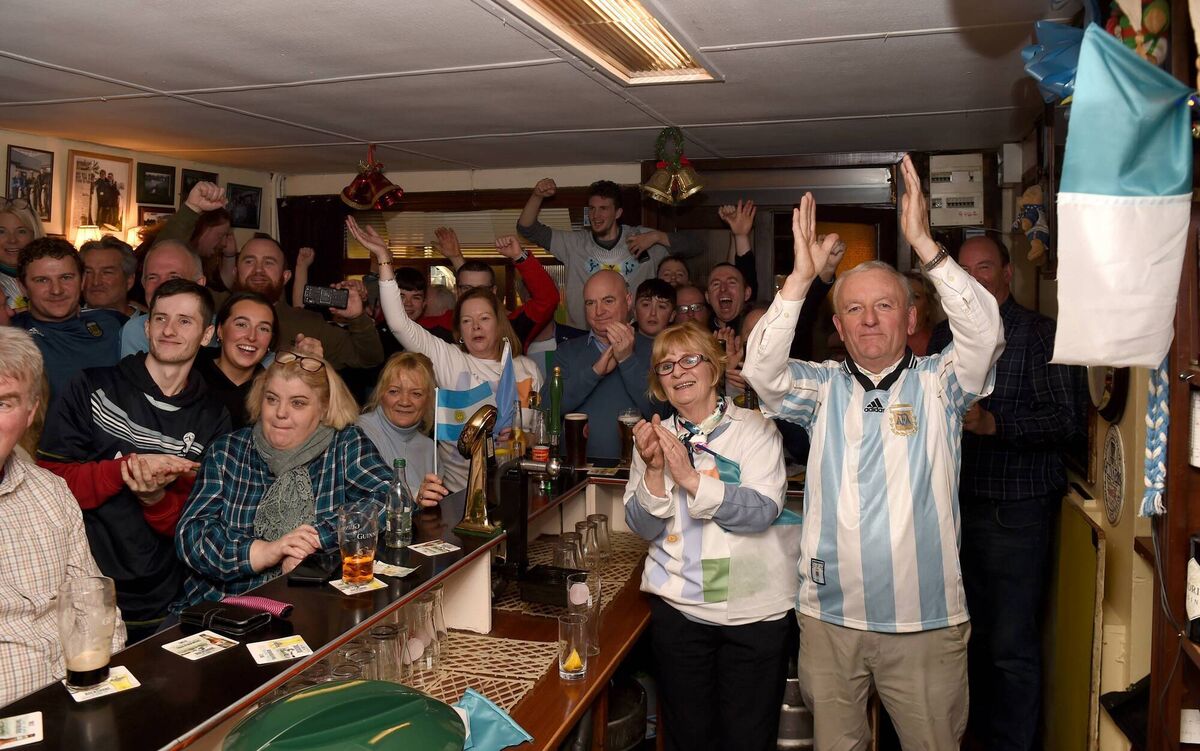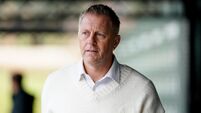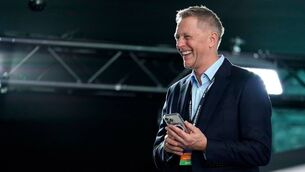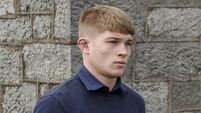Paul Rouse: Claiming our contribution to Argentina cause

TRUE BLUE: Alexis Mac Allister, who can claim Dublin ancestry, touches the FIFA World Cup winning trophy after his Argentina won the World Cup. Picture: Clive Brunskill/Getty Images)
Every World Cup announces the arrival of unheralded players who leave the competition having brought their careers to a new level.
One of these players in 2022 is the 23-year old Argentinian midfielder, Alexis Mac Allister, who arrived in Qatar as a relative unknown and departed it as a star. It is fair to suggest that he will not be playing for Brighton and Hove Albion for very much longer.
That Mac Allister’s ancestors include a man who emigrated from Donabate, Co. Dublin to Argentina in 1868 threw up a nice Irish angle on the whole event.
It was also a fine reminder of the deep connections which once flourished between Ireland and Argentina. This is a relationship that was multi-layered and was at its peak in the last decades of the nineteenth century and the first decades of the twentieth.
It was rooted in the emigration to Argentina of some 40,000 to 50,000 Irish people in the decades after the Great Famine. Many joined Germans and French and Spaniards and various other nationalities who settled on the pampas of the country as it developed in the twentieth century. It was a migration that essentially ended in the 1930s, but it persisted for long enough to leave a genuine and enduring legacy.
The migrants were drawn heavily from the midland counties of Westmeath, King’s County (Offaly) and Longford, and also from Co. Wexford.
Many who went were drawn by the prospect of acquiring land; they could not secure farms in Ireland so sought the opportunity in Argentina. As it turned out, many who went did not manage to secure their own farms, but spent their lives working as cattle hands or minding flocks of sheep.
Although there were also those who did manage to buy their own land or make their living in Buenos Aires.
How did these immigrants see themselves? Did they seek to immerse themselves in the culture and social life of their new home, or did they seek to remake Ireland in a new hemisphere?
Both things happened. Many threw themselves into their new world and were acculturated. But there were also Irish communities of churches and schools, Irish newspapers and – eventually – the Irish game of hurling.
The key figure in this story is William Bulfin who emigrated from King’s County in 1884 at the age of 23. Having initially worked on the land, he became the main mover in newspaper, which was published for the Irish community.
Bulfin used the paper to report on and promote a wide variety of Irish activities and was vital to the development of hurling.
The first significant venture was a formal hurling match between two areas in Buenos Aires – Almagro and Palermo. The trouble in putting together enough hurls for the players restricted the game to just nine-a-side. But it was a start and was followed quickly by the establishment of the Buenos Aires Hurling Club.
The game was spread through the Irish community across its network of schools and churches. The clear ambition was the promotion and preservation of an Irish identity against the backdrop of the spread of rugby and soccer in the country.
The role of Bulfin is fascinating and not the typical tale of Irish emigration. Despite the distance, he returned on holiday to Ireland in 1902, 1904 and 1906. During these trips he went on bicycle rides, which were collected as a brilliant book: ‘Rambles in Éirinn’ (1907).
He was by then closely linked with Arthur Griffith and Sinn Féin, and – sensing the swell of sentiment that might propel Ireland to independence – he left Argentina to move to Ireland in 1909, heading back to Derrinlough (near Parsonstown – now Birr) in King’s County.
William Bulfin died tragically young from pneumonia the following year, but his son Éamon, who was a student at Patrick Pearse’s St Enda's School, joined the Irish Republican Brotherhood. He not only fought with the rebels during the 1916 rising, but raised one of the flags that flew above the GPO on Easter Monday.
He recalled: "There were two flags on the Post Office. One was given to me. It was the ordinary Irish flag, green with the harp, and in white letters (inscribed) across the middle were the words 'Irish Republic'. I can’t recollect who gave it to me, but I think it was Willie Pearse."
Back in Argentina, the game of hurling came to a halt during the Great War. Part of the problem was the struggle to acquire suitable hurls. These had often been imported in the holds of ships, as Paul Darby and Seamus King (two historians of hurling in Argentina explained) because "native Argentinean mountain ash … proved too heavy and lacking in pliability."
After the war, in the 1920s, a renewed attempt (led by Miguel Ballesty of Salto, son of County Westmeath immigrants) to promote hurling saw the establishment of the Argentine Hurling Federation who established a pitch at a field in a Buenos Aires suburb. Then, in 1924, a new ground was established at Calle Santo Tome ́in the city and it became the home of a thriving hurling scene for the next two decades.
At the height of its popularity, there were almost a dozen clubs in the city. The clubs were hugely dependent on the flow of Irish priests and on the Irish schools and churches where they were based.
Ultimately, the fact that Irish emigration to Argentina essentially dried up during the 1930s brought the decline of the preservation of separate institutions and activities of the wider Irish community in Argentina. More and more, Irish families were drawn into cultural practices which were no longer rooted in Irish nationalist sentiment.

In a sporting sense, this meant playing rugby and soccer and drifting away from hurling. In both substance and symbolism, the signature moment in this came in 1946 when an amalgamation of the remaining hurling clubs was renamed simply as ‘Hurling Club’, but now played other sports such as rugby, cricket and hockey.
As part of this process, as Darby and King wrote, "half of the players in the Argentine hockey team that participated in the 1948 Olympic Games in London were from Hurling Club".
In the decades since then, the name ‘Hurling Club’ has survived and is embedded in the sporting culture of Buenos Aires. Its clubhouse makes plain the heritage of the club.
And although it didn’t happen in hurling, when the Argentinian team won the Men’s Shield competition at the 2015 World GAA Games in Abu Dhabi in March 2015, among the players were men whose ancestors had played during the hurling in previous generations.
The flows of people around the world is one of the most interesting things in sport. The whole construction of the modern sporting world in the late nineteenth century was dependent on this flow.
And migration remains central to the sporting world. A simple scan of the names on the teamsheets of every major sport shows just how true that is. There is a fascinating history around the manner in which human migrations have changed how people play. It is rooted in the idea all around the world of doing the same thing in different ways.











